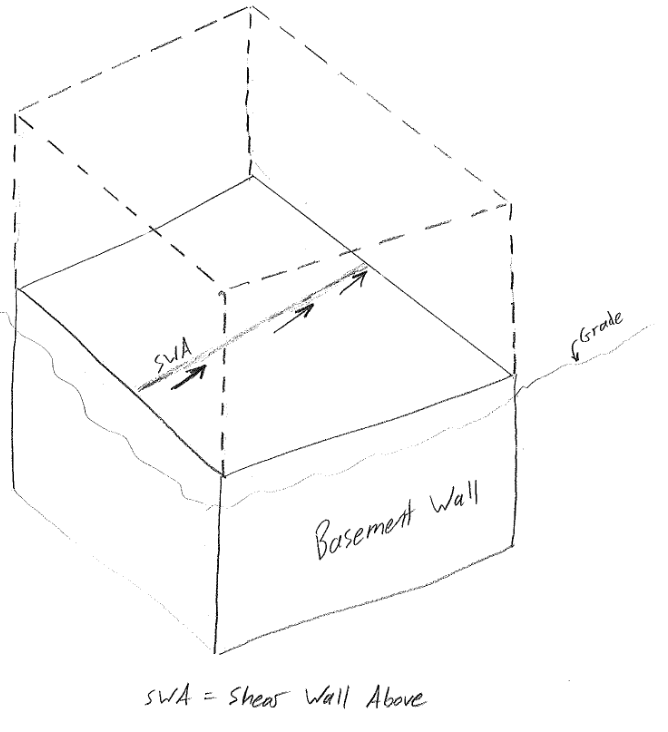Lingwist
Structural
- Oct 22, 2020
- 6
Hello, I have a question about whether and how you can count on retained soil to resist loads. In the sketch below, the solid walls show the basement walls of a house, with most of the basement wall below grade. The dashed lines above are the first floor framing. The basement walls are essentially pinned top and bottom, so the only way they resist backfill pressure is by being braced by the first floor diaphragm. That works fine, but at the heavy solid line, there is a shear wall above that sits on a beam (beam is at top of basement wall). The beam brings some load, only 3.5 kips according to the EOR, and dumps it as an out-of-plane force on the top of the basement wall. The only thing I see holding the wall from pushing out and falling over is the soil it's retaining. Does it sound reasonable to rely on soil pressure to resist a load like this?
The only hint I found in the ASCE 7-16 load code is something like "when loads due to lateral earth pressure resist the principal load effect, they have a load factor of 0.9 where the load is permanent or 0 where not permanent."

The only hint I found in the ASCE 7-16 load code is something like "when loads due to lateral earth pressure resist the principal load effect, they have a load factor of 0.9 where the load is permanent or 0 where not permanent."




